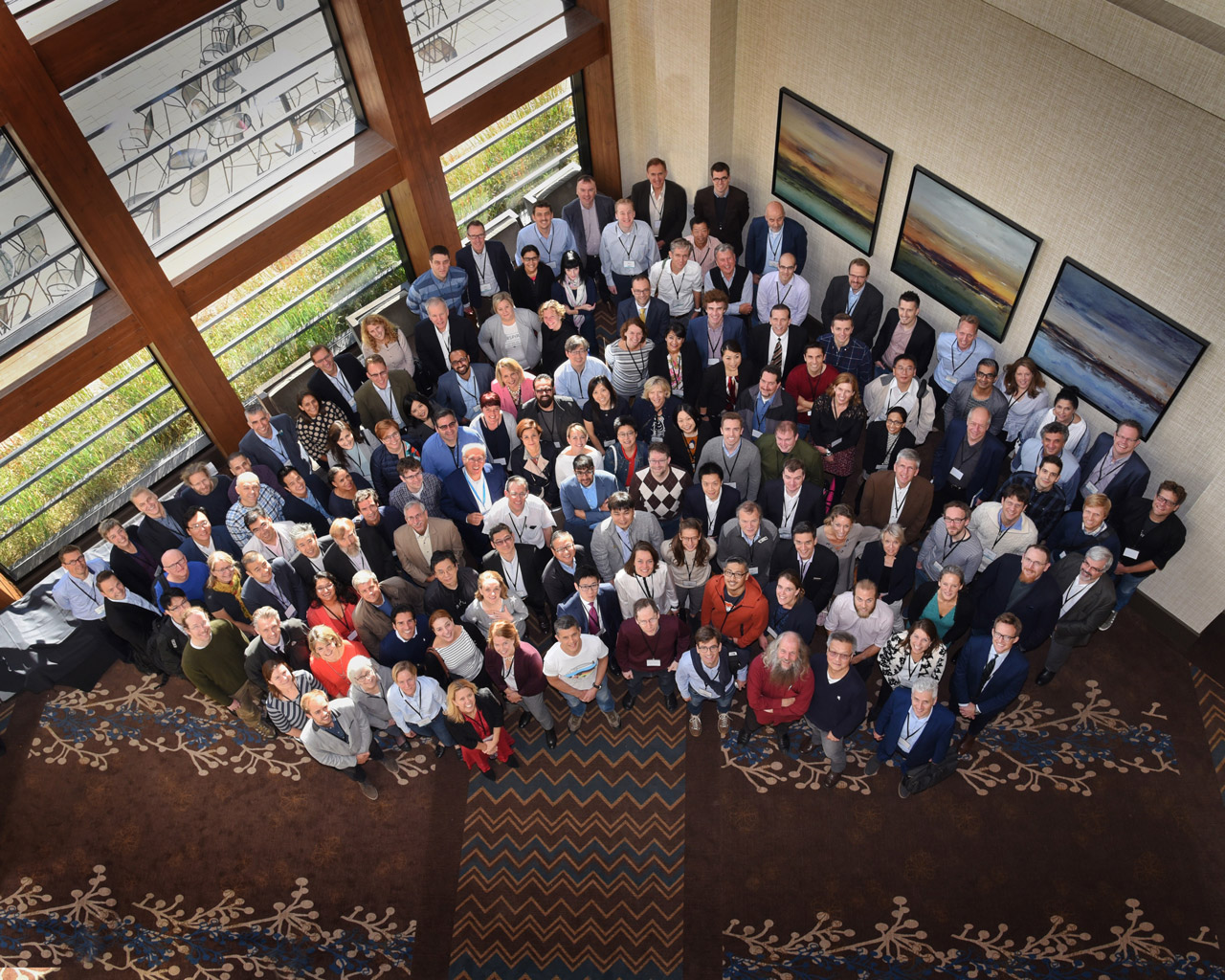A meeting of the minds
A leisurely ski down the slopes on a brisk winter’s day or an adventurous hike in the summer heat might be what one calls to mind when thinking of Blue Mountain, a resort about 170 kilometres northwest of Toronto. From Sept. 26 to 29, 2018, however, science stole the spotlight as researchers and clinicians converged on the grounds for the 12th Elekta MR-Linac Consortium meeting, hosted by Sunnybrook Research Institute (SRI). The gathering boasted the highest number of participants since the group began its meetings, with over 200 attendees from 19 institutions.
“The MR-linac meetings occur twice a year, and from its inception [in 2012] have represented a coming together of the core group of the seven founding academic members, who are dedicated to bringing the Elekta MR-linac technology from prototype to clinic,” says Dr. Arjun Sahgal, a scientist in Physical Sciences at SRI who led the assembly on behalf of Sunnybrook as director of the MR-linac program. “This meeting was Sunnybrook’s turn to host this global consortium, and a special meeting, as the first clinical results were presented with the Elekta Unity MR-linac device.”
Sunnybrook, one of the founding members of the consortium, is the only centre in Canada to house an MR-linac. The machine is also known as the Elekta Unity, and combines radiation and high-resolution MRI to treat cancer with unprecedented safety and precision. It has helped make Sunnybrook a global leader in radiotherapy.
Sahgal, who is the deputy chief of radiation oncology at Sunnybrook’s Odette Cancer Centre, has a close connection to the device, having spearheaded the effort to get it to the hospital and witnessing its delivery in July 2017. He explains the contributions of Sunnybrook’s team to the advancements that the MR-linac has facilitated, with a focus on cancers of the central nervous system and pancreas.
“Dr. Brian Kellar has led a massive research effort to understand the physical attributes of radiating in an MR-environment, and many critical publications have arisen from this work. We have also figured out the premise and future abilities of the MR-linac in treating patients with glioblastoma, with work done by Dr. Mark Ruschin, Dr. Eric Tseng and Dr. Sten Myrehaug. That research will enable a workflow once we are ready to treat the first patient to extend beyond brain tumours to more complex moving tumours like pancreatic cancers,” says Sahgal, who is also a professor in the department of radiation oncology at the University of Toronto. While discussing the role of Sunnybrook, which is the site lead for cancers of the central nervous system, he adds, “With the potential for advanced MRI applications using this device, Dr. Greg Stanisz has been leading a research program to understand how to carry out biological mapping of brain tumours so that when we can treat on the Elekta Unity, we can start inventing the future of health care right away.”
Looking ahead, Sahgal says the development by the Stanisz lab of chemical exchange saturation transfer (CEST), a novel technique used to produce contrast in MRI, as well as the ability to predict response as early as one week into therapy, will allow specialists to create personalized treatment options for glioblastoma. This new approach will be more effective and incur fewer negative consequences.
Sahgal circles back to September’s meeting and what he considers the most important points to have emerged. “We saw the first clinical treatments using the Elekta Unity MR-linac. It was special, as all the work over the past five years has come to fruition with patients now being treated,” he says. “We are at the verge of clinical implementation once regulatory approvals are obtained, and we have witnessed the workflow as to how we will start imaging and treating patients. We are also at the forefront of advanced MRI for the Unity, and have shared our work so [that] the consortium can benefit and continue the goal of advancing radiation delivery in a way that personalizes treatment.”
Next to Sunnybrook, the other founding members of the consortium are University Medical Center Utrecht, the Netherlands; the Netherlands Cancer Institute-Antoni van Leeuwenhoek Hospital, the Netherlands; The University of Texas MD Anderson Cancer Center, U.S.; the Institute of Cancer Research, working with The Royal Marsden NHS Foundation Trust, U.K.; Froedtert & the Medical College of Wisconsin Clinical Cancer Center at Froedtert Hospital, U.S.; and The Christie NHS Foundation Trust, U.K. Industry partners are Elekta AB, Sweden, and Philips, the Netherlands.
In a nutshell
- Sunnybrook Research Institute hosted the International MR-Linac Consortium’s 12th meeting, where experts discussed the first clinical treatments using Elekta’s MR-linear accelerator, a radiotherapy device.
- The machine delivers precise radiotherapy and offers extraordinary visualization, which could make radiation therapy much safer and more effective.
- Sunnybrook is a founding member of the consortium and a leader in technology development of the device for cancers of the central nervous system and pancreas.



